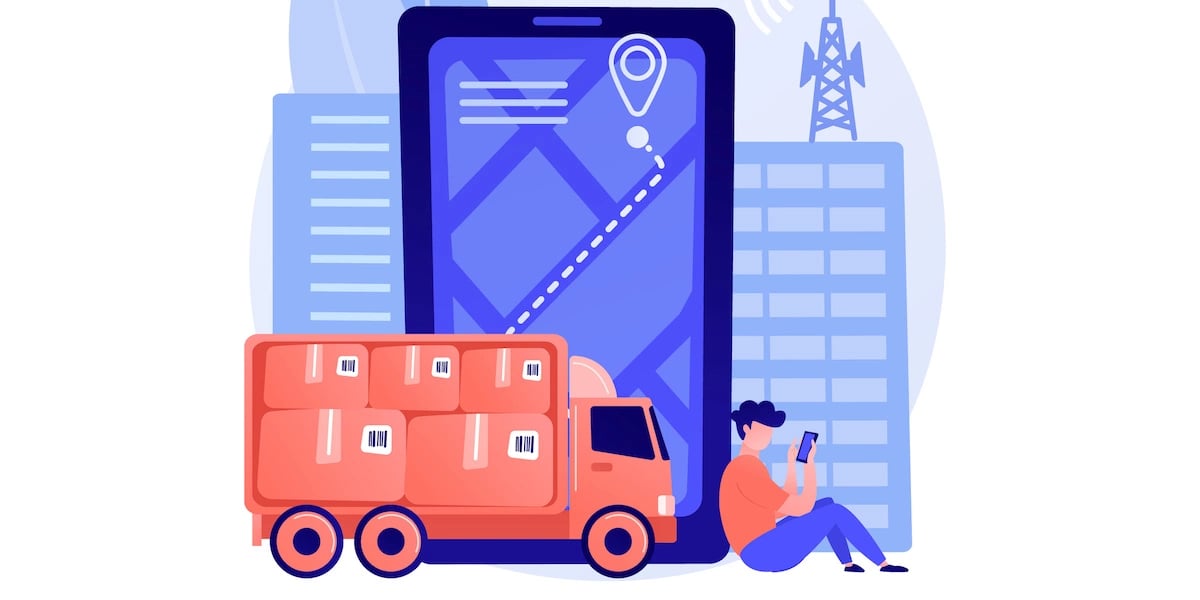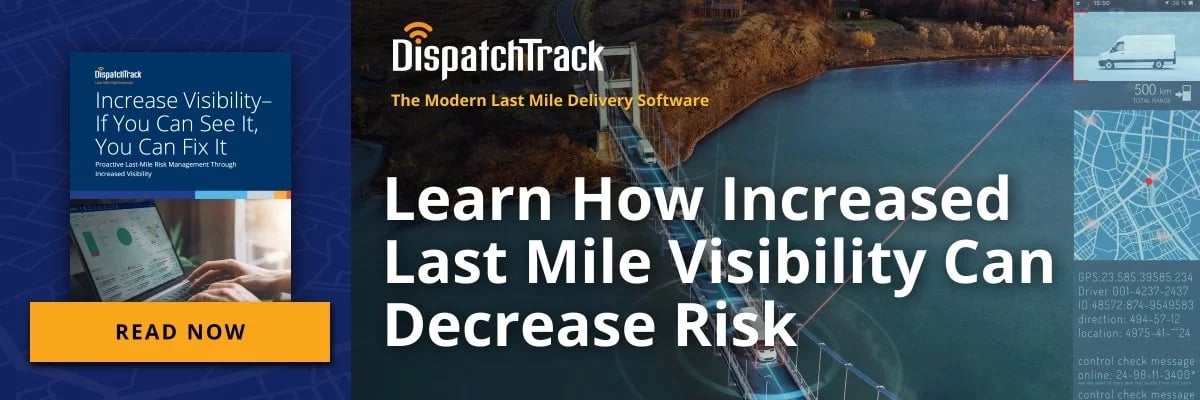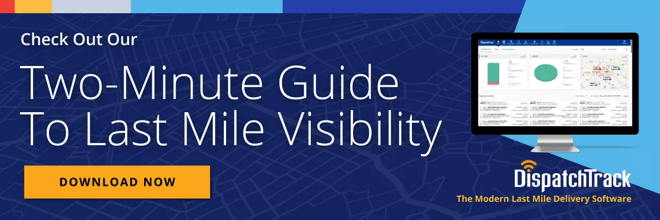There’s a lot that can go wrong on the last mile—from unpredictable traffic and weather snafus causing delays, to customers not being home when they say they will, to shipments that arrive late because the original ETA wasn’t realistic. On the other hand, there’s also a lot that can go right: a savvy dispatcher can fend off an angry customer phone call by communicating proactively about a late shipment, or empower a driver to complete a delivery more easily by offering new information or real time.

Though there are plenty of areas of last mile optimization that get more attention, the difference between things going right and everything going awry often comes down to last mile visibility. In this post, we’ll go over the importance of using your delivery management platform to boost last mile visibility and its potential impact on 5 critical business areas.
How a Delivery Management Platform Improves Last Mile Visibility
Operations
Simply put, the last mile is a huge profitability risk. According to one estimate, some food retailers could face a 25%+ decrease in profitability as online orders increase, all because last mile costs are so unpredictable.
And why are they unpredictable? Because the retailers or the 3PLs they’re working with are both equally lost when it comes to managing exceptions in real-time.
Why? Because they can’t see what’s happening on the delivery route, and as a result they can’t proactively reschedule deliveries that are going to miss their windows. They can’t monitor driver behavior through telematics integration quickly enough to stave off future truck breakdowns. And they can’t maximize the number of orders they deliver in a given day by dynamically optimizing routes that are already underway.
Simply put, if you see at a glance that a newly received order can be slotted into your route to replace a recent cancellation, or that a driver running ahead now has time to hit a pickup point between two orders, you can effectively begin to decrease your cost per delivery.

IT Spend
How many different solutions dealing with the last mile are currently in your IT stack? Maybe you have separate routing software, GPS tracking, and telematics solutions. Do they integrate easily? Do they play nicely with your accounting, ERP, or order management platforms?
If it takes you several minutes of searching and two dozen clicks to see how many failed deliveries there were on a given route, we’re guessing that it takes even greater effort to get those missed orders back into your routing system to be added to a new run, updated in your order tracker, and flagged for customer service reps. Essentially, you’re spending hours flipping back and forth between disparate solutions and paying for the privilege.
Visibility should be top-of-mind when integrating a new delivery management platform—or evaluating what’s already there. By prioritizing last mile visibility (and the integration, quality UX, and streamlining that it requires), you can root out redundant or overlapping solutions and decrease your overall spending.
Agility
Like we saw in the section on operational costs, your ability to maximize successful deliveries and keep customers happy depends on your ability to act quickly. If a delivery issue has been noted by your driver and accepted into your IT system, but you have to dig through layers of support tickets or get lucky when browsing through manifests in order to find it—you won’t be able to respond in a timely way.
Of course, agility also requires the ability to re-optimize routes on the fly and easily communicate with both drivers and customers. But before you can get any value out of those abilities you first need to be able to identify opportunities for agility in real time. If you’re re-optimizing based on out-of-date information, you’re not likely to improve the last mile situation.
Inventory
Unfulfilled deliveries don’t just cost drivers the time and effort it takes to return to the consignee’s address the next day—they can also cost you the storage space it takes to hold onto potentially bulky or perishable goods for another day, to say nothing of the truck space that they take for the entire rest of the route.
In this way, the more effectively you can reduce your reschedule rate, for instance, the more effectively you can minimize your inventory costs. To make that happen, you first need to successfully identify opportunities to avoid reschedulings and act on them while they’re still applicable.

Customer Retention
If you can see the location of every truck in your fleet at any given time, answering phone calls from irate customers becomes just a little bit easier. If you can also see the status and estimated delivery window of every order on every truck, those conversations become easier still. If, even further, you’re able to automatically alert consignees when their order’s ETA changes—and even let them check for themselves in a real-time map view—most of those conversations don’t even need to happen.
Of course, this isn’t just a matter of reducing phone time (though that is a real benefit of increased shipment visibility). Rather, it’s a matter of keeping customers happy. Whether you’re reducing stress for B2C consignees who might be blocking out large chunks of their day in order to wait for an order, or giving supply chain visibility to B2B clients as a 3PL, transparency is the key to building trust and loyalty.
Of course, offering transparency into a process that’s essentially chaos behind the scenes will be less effective on that front, but that’s a separate question. Here, it’s important to remember that 73% of consumers say that valuing their time is the most important thing a company can do in terms of customer service.
The more opaque your routing, asset management, TMS, or other delivery management platform is, the more time your dispatchers, customer support staff, and even drivers will be stuck devoting to it.
Nowhere is this more pronounced than in the onboarding process. If important information about the last mile exists in a silo or moves through your systems with low visibility, it will be more difficult and time-consuming to prepare new people to do their jobs correctly.
On the flipside, if your technology is intuitive and easy-to-use, training might be as simple as showing a new dispatcher the main dashboard, letting them know how to respond to each of the different sorts of alerts, and letting them get started. The potential business impacts here can add up quickly over time.
If any of these issues particularly speak to what you’re seeing within your own organization, the likeliest culprit is a lack of visibility. In this sense, it seems fair to say that high levels of visibility are crucial to taking care of customers, managing costs, and understanding what went wrong (or right!) on the last mile. In other words: last mile visibility is crucial for growing your business.